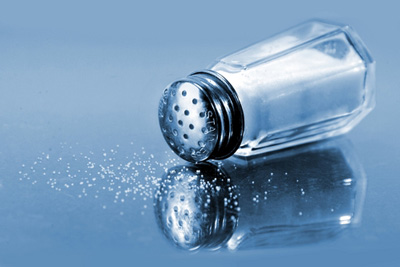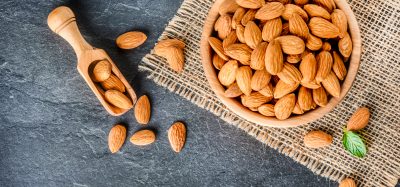Public Health England’s (PHE) 2017 salt reduction targets unlikely to be met
- Like
- Digg
- Del
- Tumblr
- VKontakte
- Buffer
- Love This
- Odnoklassniki
- Meneame
- Blogger
- Amazon
- Yahoo Mail
- Gmail
- AOL
- Newsvine
- HackerNews
- Evernote
- MySpace
- Mail.ru
- Viadeo
- Line
- Comments
- Yummly
- SMS
- Viber
- Telegram
- Subscribe
- Skype
- Facebook Messenger
- Kakao
- LiveJournal
- Yammer
- Edgar
- Fintel
- Mix
- Instapaper
- Copy Link
Posted: 20 March 2017 | Consensus Action on Salt and Health (CASH) | No comments yet
New survey by Consensus Action on Salt and Health (CASH) based at Queen Mary University of London has found that, out of 28 food categories analysed, only ‘bread rolls’ has so far met the 2017 maximum salt reduction targets




With less than nine months to go for food manufacturers and retailers to meet the 2017 Salt Reduction Targets a new survey by Consensus Action on Salt and Health (CASH) based at Queen Mary University of London has found that, out of 28 food categories analysed, only ‘bread rolls’ has so far met the 2017 maximum, but not the average, salt target and are alarmed by the lack of action so far by manufacturers and Public Health England.
The product survey which was conducted using the new and updated FoodSwitch UK app and its SaltSwitch filter, compared two shopping baskets each containing similar everyday food items, but with different amounts of salt. The difference in salt content between the ‘unhealthy’ and ‘healthy’ baskets of products was a staggering 57g of salt.
Shock findings revealed many products far exceed the maximum salt reduction targets, for example:
- Baxters Chef Selections Cullen Skink (1.1g salt/100g), more than 1.5 times salt (per 100g) the maximum salt reduction target for soup
- Aldi The Fishmonger Piri Piri Smoked Mackerel Fillets (3.8g salt/serving), 4 times more salt (per 100g) the maximum salt reduction target for meal centres
- Galaxy Ultimate Marshmallow Hot Chocolate (0.8g salt per serving), 5 times more salt (per 100g) the maximum salt reduction target for beverages
What’s more, the FoodSwitch UK app was able to demonstrate in all 28 categories there were products with at least 30% less salt, which would meet the maximum salt reduction target e.g. there was a staggering 97% difference/100g between Granola Cereals – Kellogg’s Crunchy Nut Nuts & Caramel Bites (1.13g of salt/100g) and Jordans Country Crisp with Sun-Ripe Strawberries (0.03g of salt/100g). The shopping basket analysis reaffirms the public health goal of consuming no more than 6g salt per person per day (i.e. just over 1tsp salt per person/day) is achievable, yet manufacturers are dragging their heels.
To mark its 18th National Salt Awareness Week (20-26 March 2017), supported by 19 NGOs, CASH is now calling for PHE to immediately ensure that the 2017 targets are met and that new salt reduction targets for 2020 are set. By dithering, PHE are wasting a very cost-effective opportunity to prevent ~14,000 deaths every year, by reducing salt intakes from the current 8g to the recommended 6g, which is predicted to save the NHS a further £3 billion a year.
According to a separate independent national poll, only 40% of people know that a teaspoon (6g) of salt is the maximum amount of salt you should have in a day, with nearly a quarter of the population (23%) being unsure what the correct answer is.
The general population believed that the following three food items contributed the most to the salt intake of people in the UK:
- Ready meals, including store bought pizza (30%)
- Crisps and other savoury snacks (16%)
- Salt added to food when cooking (10%)
However the correct answers are bread and cereal products, which actually contribute nearly a quarter of the salt in the UK’s diet. In other words PHE are also failing to educate the public about the risks they’re running in eating too much salt. Interestingly, over half (58%) of respondents believe it should be the responsibility of the food industry to proactively reduce salt content in their products.
Katharine Jenner, Registered Nutritionist and Campaign Director for CASH explains “Salt is the forgotten killer. The findings from our FoodSwitch shopping basket survey are alarming and we are shocked to see that many food manufacturers and retailers are still failing to meet the salt reduction targets, despite having had years to work towards them. We congratulate the other, more responsible manufacturers that have successfully achieved them, or are on track to meet them by the end of the year – which shows it is possible. With only nine months to go, action must be taken now.”
Sarah Alderton, Nutritionist at CASH adds “Our new and improved FoodSwitch UK app has been created to help consumers make healthier and more informed choices when shopping by showing traffic light colour labelling and recommending healthier product alternatives based on well researched criteria. This is putting the power back in consumer hands, as so many manufacturers still hide behind confusing labels.”
Professor Graham MacGregor, Professor of Cardiovascular Medicine at Queen Mary University of London and Chairman of CASH says “This is a national scandal. The UK was leading the world in salt reduction, but PHE are doing nothing to ensure that the 2017 salt targets are met. NICE clearly demonstrated the huge cost savings for the NHS of salt reduction (1g reduction saves £1.5 billion per year, at a cost of less than half a million pounds a year). PHE should seize this opportunity and ensure the 2017 targets are met, as well as setting new mandatory targets for 2020, to ensure that we continue to lead the world and save the maximum number of lives.”
About FoodSwitch UK
FoodSwitch UK is a free smartphone app that enables consumers to make healthier and smarter food and drink choices – now newly updated with a new design and nutrition information given per portion – to put consumers in control whilst out shopping.
FoodSwitch UK allows users to scan the barcode of over 100,000 packaged food and drinks sold across major UK supermarkets using their smartphone camera to receive immediate, easy-to-understand ‘traffic light’ colour-coded nutritional information along with suggested similar, healthier products.
When the barcode of a food or drink product is scanned by a smartphone, FoodSwitch UK instantly searches its database and identifies healthier products by comparing the overall nutritional value of the product based on well researched existing criteria. The overall nutritional rating takes into account a range of different factors important to general health including fats, sugars, salt, protein and fibre. The app, developed by leading UK nutrition research experts and led by The George Institute for Global Health in partnership with CASH, carries no advertising and is supported by 16 health and charitable organisations including Public Health England, Stroke Association and Heart UK.
Over half of the UK population agree that having an app that tells you how much salt is in your food would be useful (58%), according to the Opinion Matters poll.
Bruce Neal, The George Institute for Global Health and inventor of FoodSwitch says “FoodSwitch is all about putting power back into the hands of the community. At the same time as recommending healthier alternatives to shoppers, the photographs of missing products sent in by users give us a complete picture of what’s in the food supply. This is information that used to be the preserve of industry – we can now use it to hold big businesses directly accountable for what they are putting on the shelves.”
For the full press release and list of references please visit the CASH website.






